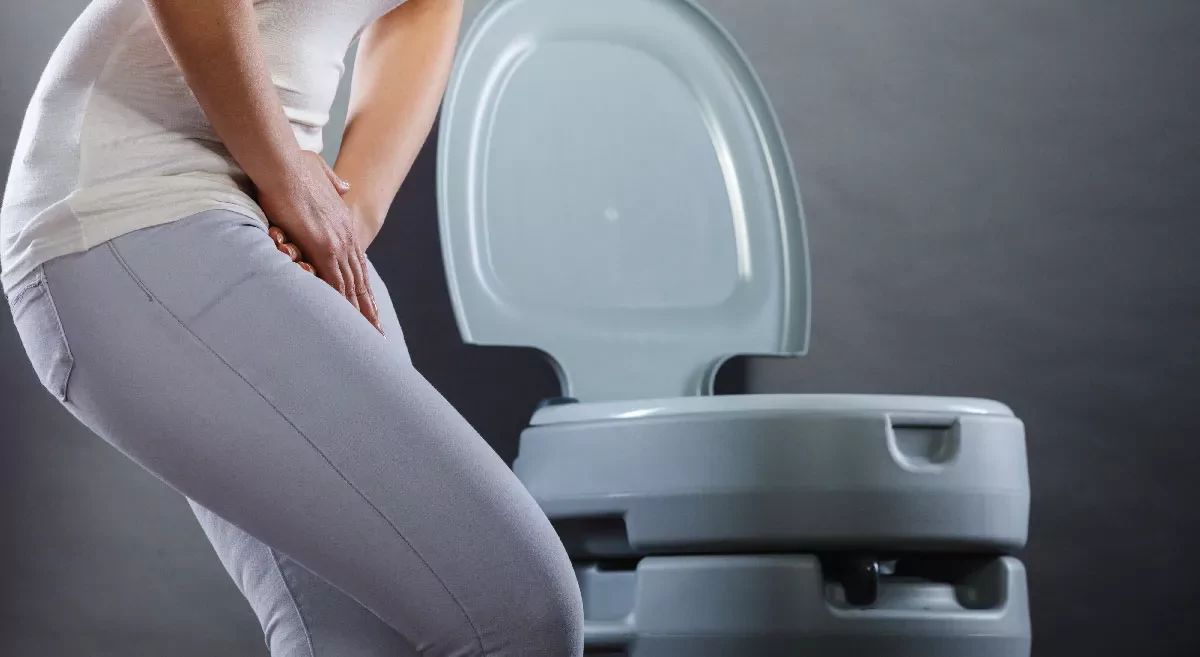Urinary leakage in women, medically termed as urinary incontinence, is a prevalent but often underreported gynaecological issue. It involves involuntary leakage of urine, which can range from a few drops when coughing or laughing to a strong urge to urinate that comes on so quickly one doesn't make it to the toilet in time or a combination of both. Its prevalence tends to increase with age. It's estimated that anywhere from 25% to 45% of women experience some degree of urinary incontinence. Despite its frequency, many women are hesitant to discuss it due to embarrassment, societal stigma, or the misconception that it's an inevitable part of aging. Understanding the causes, breaking the stigma, exploring solutions, and discussing prevention are crucial steps in enhancing awareness and improving the quality of life for those affected.
Why does urinary leakage happens in women?
Urinary incontinence is not a disease but a symptom of underlying conditions. Several factors contribute to its occurrence:
- Pregnancy, Child Birth: The pelvic floor muscles support the bladder, uterus, and urethra. When these muscles becomes weak as a result of pregnancy and child birth, they can't adequately support these organs, leading to leakage, especially when more pressure is exerted on the bladder neck and urethra(like when sneezing or exercising).
- Ageing: Estrogen, a hormone that helps maintain the health of the bladder and urethra, decreases with age. Fall in estrogen and weakening of pelvic floor muscles contribute to urinary leakage in older women especially during and after menopause.
- Overweight and Obesity: Excess weight increases pressure on the bladder and surrounding muscles.
- Overactive Bladder: This condition is characterized by an urgent need to urinate, leading to the involuntary loss of urine. It's caused by the bladder muscles contracting too often, which can be due to neurological conditions, bladder irritation as in infection or idiopathic reasons.
- Lifestyle Factors: smoking, and high-impact exercise can all increase the risk of urinary incontinence by putting extra pressure on the pelvic floor muscles.
- Medical Conditions: Certain conditions like diabetes, neurological disorders, or urinary tract infections can contribute to symptoms.
- Surgery and Pelvic radiation: Extensive pelvic surgeries ,radiation for pelvic cancers can affect the supporting pelvic floor muscles.
- Medications: Medicines that increase urine volume, those used to treat depression, sedatives, medicines for hypertension.
- Medical conditions: Connective tissue disorders( causing weakening of pelvic supporting tissue)chronic cough, constipation.
Why is urinary leakage a lesser known issue?
Despite its prevalence, there is a significant stigma associated with urinary incontinence, leading many women to suffer in silence. This embarrassment can be attributed to several factors:
- Cultural Taboos: Many cultures consider discussions about urinary functions inappropriate or shameful.
- Misconceptions of Normalcy: Some women may believe that incontinence is an inevitable part of aging or motherhood and thus not a condition to be treated.
- Fear of Judgment: Women may fear being judged as unhygienic or old, deterring them from seeking help.
Is there any solution for urinary leakage issue?
There are several effective treatments and management strategies for urinary incontinence:
- Pelvic Floor Exercises: Regularly performing Kegel exercises can strengthen the pelvic floor muscles and improve bladder control.
- Medications: Certain drugs can increase bladder capacity and reduce the urge to urinate.
- Surgery: Procedures like sling surgeries can provide support to the urethra or bladder neck, improving urinary retention.
- Lifestyle Changes: Weight loss, fluid and diet management, and avoiding bladder irritants like caffeine and alcohol can alleviate symptoms.
Is urinary leakage issue preventable?
Preventing urinary incontinence involves a proactive approach to pelvic floor health:
- Regular pelvic floor exercises: These can increase muscle strength and prevent leakage, especially important after childbirth.
- Healthy lifestyle: Maintaining a healthy weight, avoiding smoking (which can affect the strength of connective tissue), and staying active are all beneficial.
- Timely treatment of medical conditions: Addressing issues like diabetes or high blood pressure can help prevent their impact on incontinence.
Let’s raise awareness about urinary leakage issue
Raising awareness and fostering open conversations about urinary incontinence can help break down the stigma. Women's health initiatives and public health campaigns can educate the public about the condition, emphasizing that it's a common, treatable medical issue rather than a source of shame. Healthcare providers can also play a key role by routinely asking about urinary symptoms and providing information on treatment options.
In conclusion, urinary leakage in women is a significant yet solvable issue. By understanding its causes, openly discussing it, exploring various treatments, and emphasizing prevention, women can find effective solutions and improve their quality of life. It's essential for society to support this openness, transform perceptions, and ensure that women feel empowered to seek help without embarrassment.










